Curtains can be made from various different types of fabrics. The type of fabric used in making curtains greatly contributes to the final look and feel of the room. Not only does a designer have to choose fabrics for esthetic reasons but also for practical reasons as well. Different fabrics will have different uses and give different final looks to the finished product.
Here I will look at 6 different fabrics used in curtain making and how and where each of these fabrics could be best used. Remember, these are just some samples of fabrics that can be used…there are many, many more to choose from and a good interior designer can help you make the right choices for your home!
Linen: Linen is manufactured from the flax plant and can be woven into quite a fine, thin fabric or conversely into a heavyweight piece good for not only curtains but for soft furnishings as well. Linen is a very tasteful and appealing fabric to use yet it does require a fair bit of care to keep them looking nice. After cleaning, linen must always be ironed, as it tends to wrinkle easily. Linen could be used in a reception or sitting room where the look is to be light and airy. As linen can be quite sheer, it would allow light to flow in.
These floor to ceiling curtains, while offering some privacy still allow the light to flow through. The soft drape of the curtains gives the room a romantic feel.
The natural colour of these linen curtains blend in nicely with the neutral colour palette of the sitting room. Again, these soft linen curtains allow the light to fill the room.
Velvet: Velvet is a woven tuft fabric in which the cut threads are evenly distributed. This gives velvet a short dense pile, which in turn gives it a soft, rich, distinctive feel. It can be made from natural or synthetic fibres. Velvet curtains have a heavy weight to them making them suitable to keep out both light and cold. Velvet could be used in a very formal living room or otherwise in a bedroom to give the rooms a rich, opulent luxurious feel. The bedroom is a great place to use velvet as it keeps out the light as well as the cold draughts. It will give the room a very sumptuous feel to it and make it more inviting.
These moss coloured velvet curtains immediately make the room feel luxurious, opulent and elegant.
These heavy, draped velvet curtains lend an air of luxury and sophistication to this bedroom while giving it a cosy, warm feel. They are also practical for blocking out the sunshine.
Gingham: Gingham is a light to medium weight plain-woven cotton. In interior design, it can be associated with kitchens and bathrooms as well as baby rooms. Gingham has a cheerful and playful feel to it and can be made in colours ranging from the very, very bright to basic black and white. Gingham has no right or wrong side as the fabric is dyed before it is woven which makes it easier to use for home furnishings and curtains. I would use gingham when adding a touch of “country” to a kitchen or to add a sweet, playful feel to a child’s room.
These lime green gingham curtains give a light and playful look to a child’s room. The colour is gender neutral and be used for either a boys room or a girls.
Gingham can be used in a variety of colours including the very bright to pastels to a more masculine black and white.
Brocade: Brocade is an elaborately woven cloth with a raised design. In both clothing and interior design, brocade is usually best used in formal styles. The pattern on a brocade curtain can be heavily patterned or very subtle. Brocade can be used in formal styles of curtains such as swags and tails as the fabric suits the grandeur of such features. Brocade has mainly been associated with wealth and opulence and would be best used in a formal setting such as a grand and sophisticated reception room. Using brocade curtains in a similar colour to the surrounding walls would give the room a distinct elegance without being over bearing.
The use of brocade with the swags and tails fits in well with the grandeur and elegance of this room.
The details of brocade is seen here during the weaving process.
Calico: Calico is a very inexpensive plain-woven fabric. It is often unbleached and natural in colour. If calico is left unlined, it can be semi-sheer making it useful for rooms that need to let in some light. Otherwise, it can be lined and interlined for a more upscale look. I would use calico in a sitting room that is classic in style and not too formal. Calico curtains can give a room a comfortable and relaxed atmosphere due to the natural look and feel of the fabric itself. It is best to use calico at 3 times fullness when making curtains.
Unlined, white calico curtains keep with the natural and simple theme of the room.
Calico curtains made in a more formal, pleated style.
Toile de Jouy: Toile in French means “fabric” and “de Jouy” refers to the fact that this particular fabric was first made at a factory in Jouy-en-Josas in France. Most commonly toile de jouy is seen on cream or off-white background with the distinctive scenes printed in blue or red. This fabric is best used in a country dining room or in bedroom for a romantic French vibe. Used in the bedroom, it makes for lovely bedding as well as curtains.
Toile de Jouy fabric used here to give the room a romantic, soft and feminine feel. It is used nicely on both bedding and curtains and does not feel or look over the top.
Here is another example of toile de jouy fabric that brings about a sense of romance, sentiment and femininity.


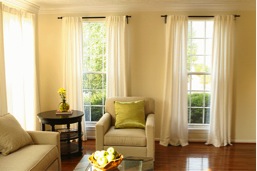
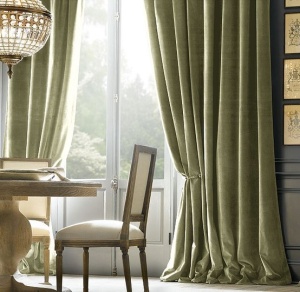
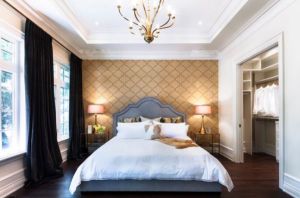
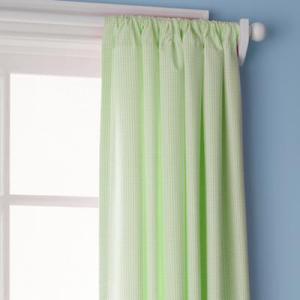
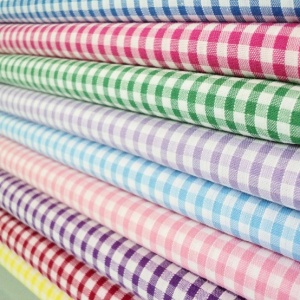
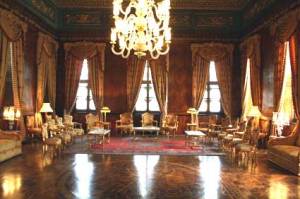
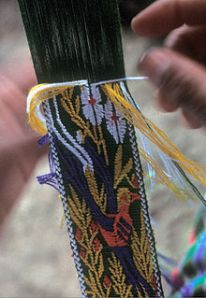
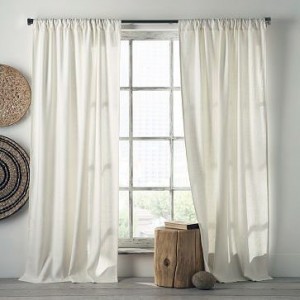
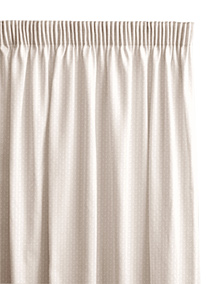
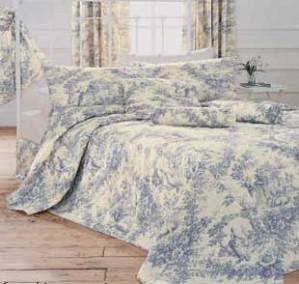
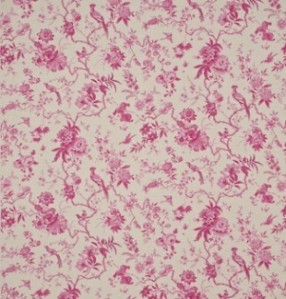
Nice color combination of curtain fabric with interior.
Moreover, enjoyed reading, keep blogging
Oh thank you so much for the compliment!
All fabric designs are cool enough. great work
Thanks for reading my blog! Glad you enjoyed it!
really good
How can I speak to you?
Hi, sorry I don’t do interior design at all anymore!